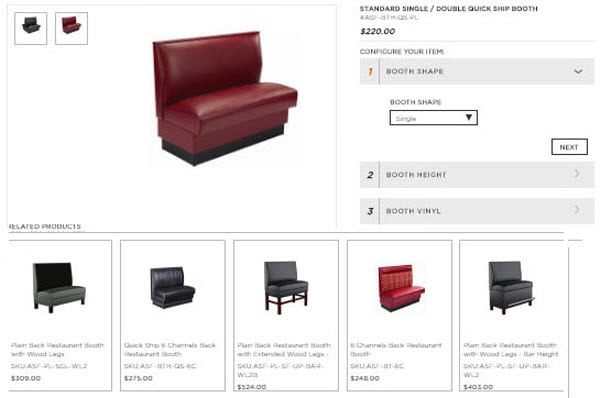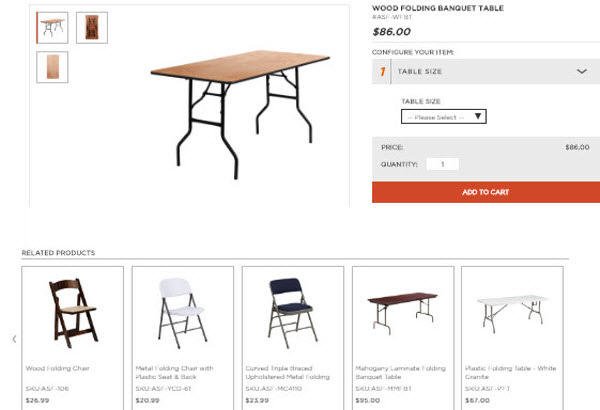At times, there seems to be sales and pricing strategies for every industry- each specifically tailored and modified to meet their business needs. While certain establishments prefer to down-sell, other companies lean on cross selling and upselling techniques to entice customers with desirable products to advance their endeavors in their commerce. But for many CEO’s and business owners, the distinction between upselling and cross selling may be confusing – especially when these methods share many similarities. Not knowing what is cross selling from upselling may hinder their efforts in promoting and selling your merchandise.
Techniques of Upselling and Cross Selling Restaurant Furniture

Sales Techniques for Maximizing Customer Relationships
The truth of the matter is that it can cost at least four times as much to sell to a new customer as it does to an existing one. That’s why most sellers already that they can sell more, promote their service, reduce the cost of sales, enhance customer loyalty and drive revenue by cross selling and up selling to those already on their client roster. As a customer, you can take advantage of such effective pricing strategies supported with the right sales method and find great deals that will allow you to furnish your venue in a more cost effective way. In turn, you can also use the techniques listed below, to cross sell and upsell to your own customers.
Most online retailers believe that upselling and cross selling account for 10% to 30% of their sales. In 2006, Amazon reported that more than 35% of its sales were a result of the website’s constant cross selling and upselling efforts. As it happens to be, most businesses upsell and cross sell their items to their customers as a way to promote and sell maximum products. However, when these sales techniques are used incorrectly, they can have disastrous consequences with customer relationships and overall profits. This blunder can create a nightmarish shopping experience for them. Whether you are a supplier or a business owner for that matter, it behooves you to learn what cross selling is, familiarize yourself with upselling techniques, and use them to your advantage.
How Upselling Strategies are Applied

Upselling is a business practice which is used to encourage customers to make purchases on comparable higher end products than the item they are looking at. If you are interested in buying this dark grey bistro chair, for instance, we may suggest this clear finish bistro metal chair to you instead. This practice is mostly used to sell a product that is commercially viable for a business or any industry. Upselling increases the volume of existing orders resulting in a rise in units or a product upgrade. We can put this method into effective use to provide customers the best value for their money.
Showing customers other versions or models of the product may potentially better fulfill their specifications and increase AOV (average order value) thus resulting in customer satisfaction. Upselling requires a lot of practice and strategy. Businesses that are excelling in this procedure are efficient in helping their customers visualize and even appreciate the value they get in ordering a more expensive item. However, upselling techniques need to be applied with caution and implemented in an appropriate manner. Otherwise this sales strategy can backfire which can jeopardize customer relations and loyalty. Therefore it is essential that meticulous research is done and the needs of the customers are taken into account. This also means that customers end up with a better product and in the long run even save money on shipping costs or needing less replacements in the future.< p>
What is Cross Selling: Harness the Power of Listening and Timing

Cross selling is used by online retailers and manufacturers to validate an additional complimentary product or service that customers are already using. It identifies products that satisfy unfulfilled needs of customers by the original item. This sales technique can also be used to forge and strengthen relationships with various departments and customers within your company or with companies tied to them such as a subsidiary. For instance, a table base can be cross sold to a customer purchasing table tops to help them easily create restaurant tables. Cross selling often directs customers to products they intended to buy anyways. Cross selling helps produce sales by presenting these items to the customer at the right time.
Cross selling is commonly used in every type of commerce. It is especially utilized on product pages with a checkout process and life cycle campaigns in eCommerce. This method is a highly effective sales tactic which generates repeating purchases and demonstrates the scope of a catalog to customers. Cross selling can notify them of products they weren’t aware that you sell thus earning their confidence and trust as someone who is able to satisfy their needs. This technique also reduces sales cycles by getting bigger commitments at the moment rather than later.
Planting the Seeds of Success
Whether you decide to upsell, cross sell or do both, you need to strongly consider tracking your data. Decisions such as which products pair well with cross selling or what features drive your upsells should be made. When should you upsell or cross sell, especially in the moment of the purchasing process. Metrics can help you perfect this portion of your sales pan. Likewise, methodically developed upselling and cross selling initiatives can enable you to exponentially increase your sales growth. But truly understanding what your customers value and responding products as well as corresponding features that meet their needs is key to cultivating success in your business endeavors.
